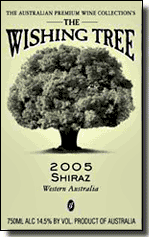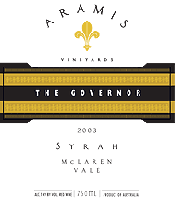 Tasting Australian wines with John Larchet is illuminating. With 80% of the Australian wine production controlled by four companies — Larchet’s is not one of them — it’s not surprising that the conventional wisdom about Aussie wines is that they all have a certain similarity — big, bold and alcoholic.
Tasting Australian wines with John Larchet is illuminating. With 80% of the Australian wine production controlled by four companies — Larchet’s is not one of them — it’s not surprising that the conventional wisdom about Aussie wines is that they all have a certain similarity — big, bold and alcoholic.
Larchet, who founded The Australian Premium Wine Collection, represents small producers whose wines show the incredible diversity of Australia’s wine-growing areas. He also has his own line of wine, The Wishing Tree, one of the best values in wine today.
 Of course, wines from the state of Western Australia are very different from those in South Australia mainly because of climate, but what Larchet demonstrates is major differences between wines from producers who share a smaller, more defined area, such as McLaren Vale within the state of South Australia.
Of course, wines from the state of Western Australia are very different from those in South Australia mainly because of climate, but what Larchet demonstrates is major differences between wines from producers who share a smaller, more defined area, such as McLaren Vale within the state of South Australia.
Larchet tells me that McLaren Vale has the reputation for the best growers of Shiraz while the Barossa takes the lead with winemaking with that varietal. (Perhaps it explains why a bulk of Penfolds’ Grange, Australia’s most famous Shiraz, comes from McLaren Vale).
The Coates 2004 Shiraz, from hillside vineyards in McLaren Vale (about $37), has plummy ripe fruit, but also earthy and slightly tarry elements, with balance and elegance not usually associated with Australia Shiraz. In short, it has that ‘not just fruit’ character that makes it very appealing to me.
 Move a few miles away to the valley floor, but still in McLaren Vale, to the Aramis Vineyards 2003 ‘The Governor’ Syrah, a much riper, more powerful — to my mind, less elegant — style of Syrah. Although you could argue the differences are due to winemaking style, Larchet insists it’s the difference between the cooler hillside vineyards of Coates compared to the warmer valley floor for Aramis.
Move a few miles away to the valley floor, but still in McLaren Vale, to the Aramis Vineyards 2003 ‘The Governor’ Syrah, a much riper, more powerful — to my mind, less elegant — style of Syrah. Although you could argue the differences are due to winemaking style, Larchet insists it’s the difference between the cooler hillside vineyards of Coates compared to the warmer valley floor for Aramis.
The point is, not that one’s necessarily ‘better’ than the other — although I certainly have my preference — but rather, they are very different wines that reflect where the grapes were grown.
It’s a welcome diversity not often associated with Australian wines.
2
